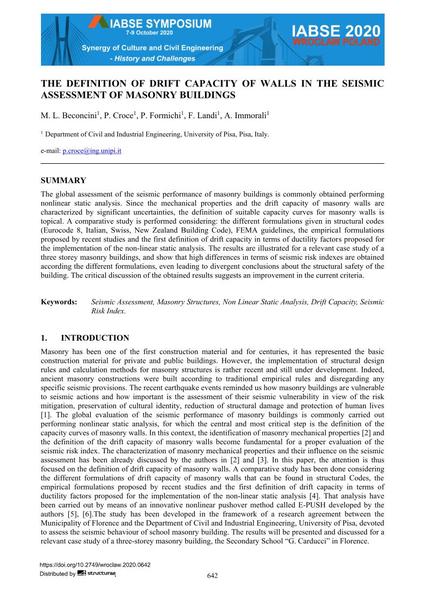The Definition of Drift Capacity of Walls in the Seismic Assessment of Masonry Buildings

|
|
|||||||||||
Détails bibliographiques
| Auteur(s): |
M. L. Beconcini
P. Croce P. Formichi F. Landi A. Immorali |
||||
|---|---|---|---|---|---|
| Médium: | papier de conférence | ||||
| Langue(s): | anglais | ||||
| Conférence: | IABSE Symposium: Synergy of Culture and Civil Engineering – History and Challenges, Wrocław, Poland, 7-9 October 2020 | ||||
| Publié dans: | IABSE Symposium Wroclaw 2020 | ||||
|
|||||
| Page(s): | 642-649 | ||||
| Nombre total de pages (du PDF): | 8 | ||||
| Année: | 2020 | ||||
| DOI: | 10.2749/wroclaw.2020.0642 | ||||
| Abstrait: |
The global assessment of the seismic performance of masonry buildings is commonly obtained performing nonlinear static analysis. Since the mechanical properties and the drift capacity of masonry walls are characterized by significant uncertainties, the definition of suitable capacity curves for masonry walls is topical. A comparative study is performed considering: the different formulations given in structural codes (Eurocode 8, Italian, Swiss, New Zealand Building Code), FEMA guidelines, the empirical formulations proposed by recent studies and the first definition of drift capacity in terms of ductility factors proposed for the implementation of the non-linear static analysis. The results are illustrated for a relevant case study of a three storey masonry buildings, and show that high differences in terms of seismic risk indexes are obtained according the different formulations, even leading to divergent conclusions about the structural safety of the building. The critical discussion of the obtained results suggests an improvement in the current criteria. |
||||
